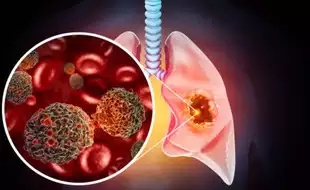
Factors That Increase Your Risk Of Lung Cancer
Photo : iStock
Lung Cancer Awareness Month is observed every year in the month of November to spread awareness about lung cancer. This is a form of cancer that begins as a growth of cells in the lungs. Lung cancer is the leading cause of cancer deaths worldwide.
According to World Cancer Research Fund International, there were more than 2.2 million new cases of lung cancer in 2020 globally. Along with that, lung cancer caused nearly 1.8 million deaths and it is the second most common cancer in the world.
Lung cancer has a high fatality rate and therefore, spotting the early signs can be beneficial as it can help in early diagnosis and treatment. There are several factors that increase your risk of lung cancer. Here, take a look at some of the factors.
Air Pollution
Breathing in polluted air, especially in cities with high traffic and industrial activity, exposes people to harmful particles like dust, soot and chemicals. These can settle in the lungs, thereby, causing inflammation and increasing the risk of respiratory diseases, including lung cancer. Pollutants such as nitrogen dioxide and sulfur dioxide can damage lung tissue over time, making it more susceptible to disease.
Secondhand Smoke
Even if you don’t smoke, breathing in secondhand smoke which is exposure to the smoke from others poses significant health risks. The chemicals in cigarette smoke damage lung cells, thereby, increasing the risk of cancer. Regular exposure to secondhand smoke can increase a non-smoker’s risk of lung disease by up to 30%.
Radon Gas
Radon is a naturally occurring radioactive gas that can seep into the air and homes from the ground. It is odourless and invisible which makes it difficult to detect without a specific test. Radon is the second leading cause of lung cancer, and long-term exposure can cause lung cell mutations, thereby, increasing cancer risk.
Occupational Hazards
Certain jobs expose people to dangerous chemicals and particles. For example, miners, construction workers and factory workers may be exposed to asbestos, silica dust and chemicals like formaldehyde. These substances can lodge in the lungs, thereby, causing chronic irritation, scarring and cancer over time.
Smoking and Vaping
Smoking tobacco is the leading cause of lung cancer. It introduces carcinogens directly into the lungs, which then enter the bloodstream. Smoking damages lung cells, thereby, making them more prone to mutation. Even vaping has risks. Some vape liquids have potentially toxic chemicals that can cause lung inflammation and damage.
Genetic Factors
A family history of lung disease or cancer can increase a person’s risk. Genes affect how the body processes toxins and repairs damaged cells. In some cases, genetic mutations passed down through families make people more susceptible to developing lung disease.
Chronic Respiratory Infections
Repeated respiratory infections, such as bronchitis or pneumonia can weaken the lungs over time. Chronic inflammation from such infections damage lung tissue, thereby, making it more susceptible to harmful substances and potentially increasing the risk of lung disease. People with conditions like chronic obstructive pulmonary disease (COPD) have a higher risk, as their lungs are already compromised and more vulnerable.
Get Latest News Live on Times Now along with Breaking News and Top Headlines from Health and around the world.

